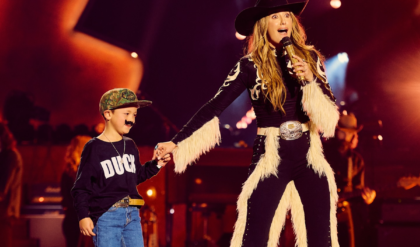Dwarves in Middle-earth have a reputation for being grumpy, self-centered, and caring only for wealth since the middle of the First Age, sometimes with good reason. In The Fellowship of the Ring, Elrond tells Gandalf that the One Ring can’t stay in Rivendell because the Elves are leaving Middle-earth for their final journey into the West. Elrond then asks, “Who will you look to when we’ve gone? The Dwarves? They hide in their mountains seeking riches, they care nothing for the troubles of others.”
The Elf-Lord of Rivendell isn’t entirely incorrect to make such a harsh comment, and there’s some merit to his opinions. As such, readers/viewers assume that — with the exception of Gimli — the Dwarves are absent from The Lord of the Rings because they have no interest in defeating the Dark Lord of Mordor. That couldn’t be further from the truth. The Dwarven kingdoms were actually busy fighting one of the largest battles of the entire War of the Ring, leaving only Gimli to aid the race of Men. So, where were the Dwarves in The Lord of the Rings?
Updated on August 6, 2024, by Ajay Aravind: Tolkien’s vast mythos comprises several sentient races beyond Elves, Men, and Hobbits. Each of his stories includes the cross-interactions between races, as seen in The Lord of the Rings. Despite their storied history and countless accomplishments, the Dwarves play a very small role in Tolkien’s epic saga. Between The Hobbit, which introduced 13 Dwarven main characters, and Gimli’s participation as a member of the Fellowship of the Ring, fans have often wondered why his kinsfolk withheld their participation in the war against Sauron. As such, we’ve updated this feature with more information regarding the history of the Dwarves in Middle-earth.
The History Of Dwarves In Middle-earth
Dwarves Were Created Long Before The Elves Awakened
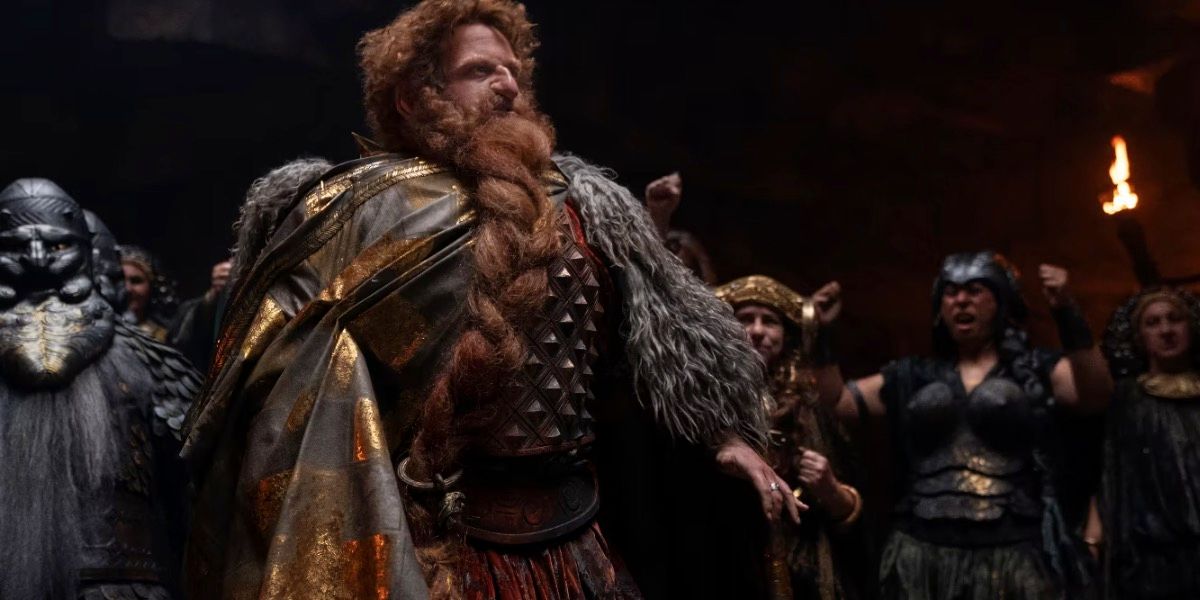
Race
Notable Individuals
Domains
Dwarves
Thorin II Oakenshield, Gimli son of Glóin, Durin III, Durin IV
The Lonely Mountain (Erebor), Khazad-dûm (Moria), Nogrod, Belegost
Interestingly, the Dwarves were the first sentient beings to arise in Middle-earth. Long before the Elves awoke at Cuiviénen, the Vala Aulë crafted the Seven Fathers of the Dwarves. The creator Eru Ilúvatar was displeased but thankfully prevented Aulë from killing his own “children.” Ilúvatar then put the Dwarves in stasis until the Firstborn Elves. For this and many other reasons, Dwarves and Elves have always been at loggerheads. They differ in temperament, culture, and environmental preferences.
Elves prefer woodlands and open skies, while Dwarves love their “halls of stone” beneath the Earth. Despite being the Children of Ilúvatar, they have been involved in numerous skirmishes, conflicts, and battles, although not necessarily on opposing sides. Indeed, one of the quieter messages in The Lord of the Rings is how the two races can set their differences aside in the face of common goals, best exemplified by the friendship of Legolas and Gimli.
Dwarven Warfare In Middle-earth
Most Dwarven Conflicts Took Place In The First Age
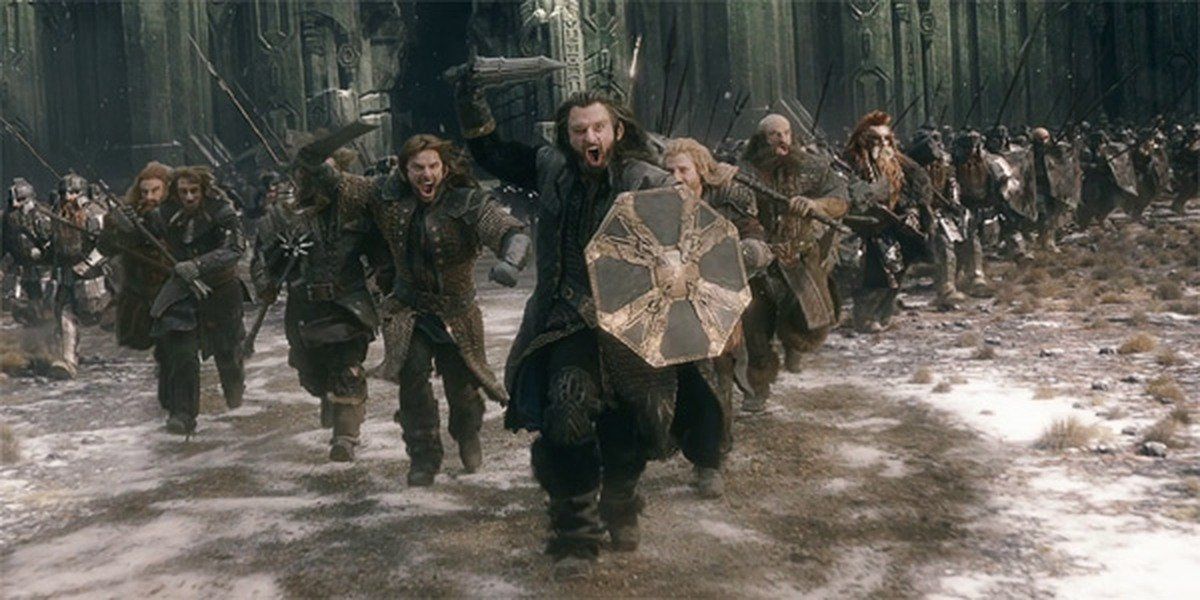
All the most prominent examples of Dwarven warfare in Middle-earth occurred during the First Age, where they fought in the Nírnaeth Aronoediad and the First Battle of Beleriand. Unfortunately, the Dwarven greed for precious metals came to the forefront with Dwarves of Nogrod, who created a magnificent necklace known as the Nauglamír for Elu Thingol, the King of Doriath. With Silmaril glittering as the centerpiece, the Dwarves had the gall to demand the Nauglamír itself as payment for their work. Thingol refused, and the resulting series of battles essentially destroyed Doriath. It has been said that the Elvish-Dwarven rivalry will continue until the world is remade again.
Notable Dwarven Battles After The First Age:
The Battle of Five Armies
War of the Last Alliance
The Battle of Azanulbizar
War of the Dwarves and Orcs
On the other hand, some Dwarves participated in the Last Alliance of Elves and Men, hoping to eradicate Sauron’s toxic influence from Middle-earth. The Dwarves of Khazad-dûm, led by King Durin IV, were known to have fought alongside their Elvish brethren during this massive war. The Rings of Power series nods to this with the bonds between Durin and Elrond. Most Dwarves were happy to sit atop their mounds of treasure deep inside their mountain homes. It wasn’t until the end of the Third Age that the Dwarves were dragged into a large-scale battle again.
Why Didn’t The Dwarves Fight In The Lord Of The Rings?
They Were Busy Fighting Sauron’s Easterlings Off-Screen
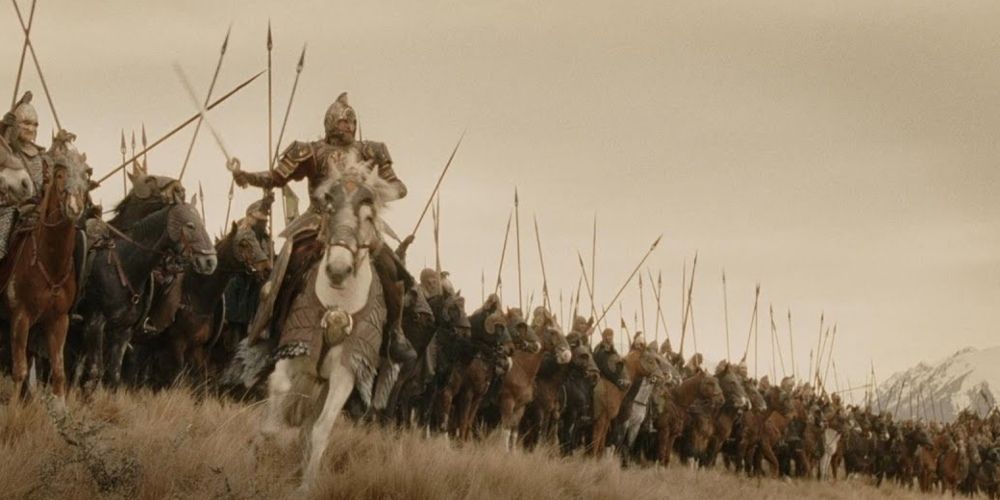
Before the War of the Ring, the Dwarves took part in the Battle of Five Armies, an event covered in the third and final installment of Peter Jackson’s The Hobbit trilogy. While this war ended in victory for the Dwarves, far too many lives were lost, including that of Thorin Oakenshield. There was no conflict for the next few decades, at least until Sauron began amassing his forces for an all-out war, and the Dwarves set about rebuilding their kingdom under the Lonely Mountain, with Dain II as their new king.
This proved extremely important in the subsequent War of the Ring, which explains why Gandalf sent Thorin’s party to reclaim the Lonely Mountain in The Hobbit. If Dwarves controlled the Mountain, it could serve as a mighty bulwark. If Smaug the dragon remained there, however, it could become a fatal liability. Thankfully, the gambit worked and the dragon was slain. The Dwarves’ newly reclaimed kingdom did end up fighting in The Lord of the Rings, but their achievements weren’t detailed in the main story.
After they refused to cooperate with Sauron, he sent legions to attack the Dwarven kingdoms, including the great city of Erebor. The allies Sauron sent were the Easterlings, humans whose ancestors had served the first Dark Lord Morgoth. They were more than happy to support Sauron’s plans of conquest, possessing the largest army in the entire war. With more than 200,000 troops, the Easterlings completely overshadowed any army that stood against it. However, that didn’t mean the Dwarves wouldn’t put up a fight.
The battle was bloody for the first three days and saw heavy casualties. The area that Bilbo had traveled during The Hobbit all those years before — Laketown and the neighboring city of Dale — was overrun by Easterlings, and the kings of Dale and Erebor were slain, causing panic throughout the region. That led both Men and Dwarves to flee into the Lonely Mountain and seal up the city. While the situation seemed grim, the Dwarven stronghold proved almost impossible for the enemy to penetrate.
The Dwarves Claimed Victory — But The Enemy Remained
King Aragorn Continued To Fight Easterlings During His Reign
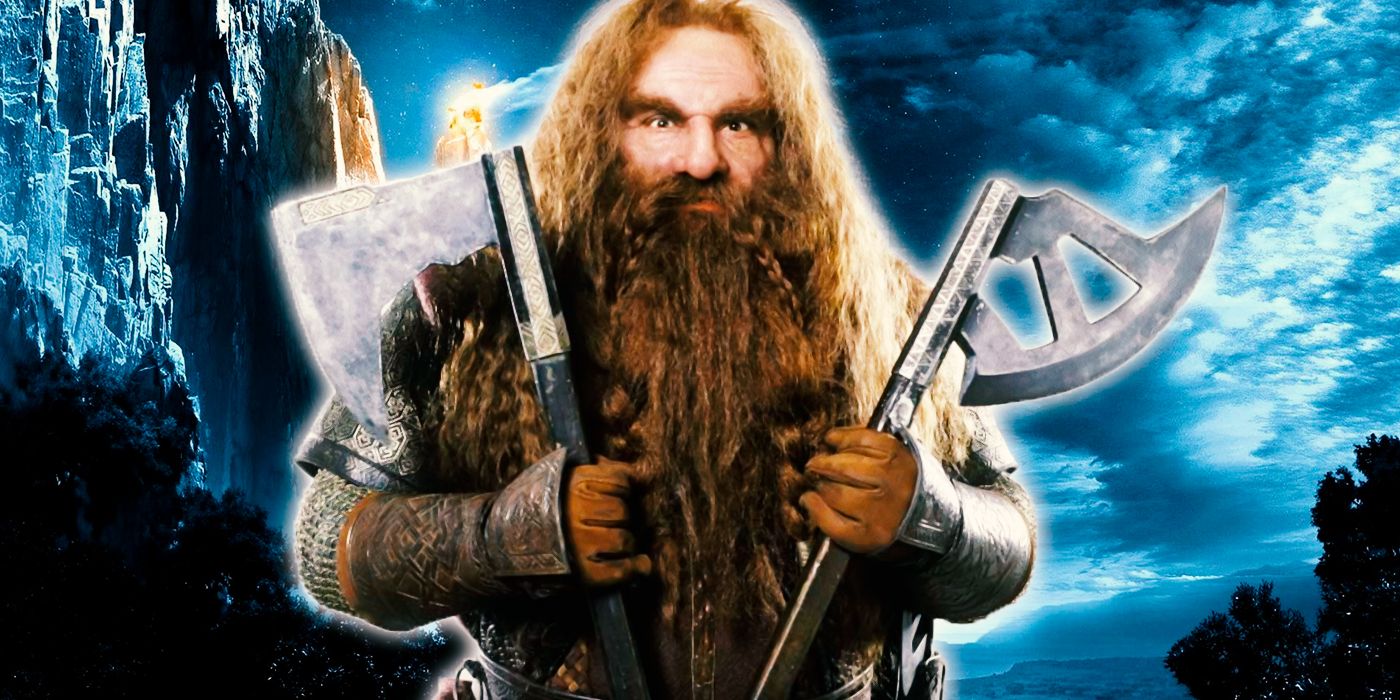
With Sauron sending his largest army to take on the Dwarves, he likely thought the battle would be over swiftly. But the Dwarves kept the Easterlings distracted for the duration of the war, which meant they couldn’t return to defend Mordor. That gave Aragorn enough confidence to distract Sauron at the Black Gate and allowed Frodo to enter Mount Doom undetected.
Dwarven stubbornness proved too much even for an army of 200,000. The Easterlings failed to break through Erebor’s defenses for the entirety of the War of the Ring — the conflict that served as the primary focus of The Lord of the Rings. Eventually, news spread about the fall of Sauron, and the army was forced to retreat to the East. However, it’s said the Easterlings continued to be a problem well after Sauron passed from Middle-earth. King Elessar spent much of his time suppressing attacks from Easterling armies, but not much was known about them after that.
What Happened To Gimli After The War Of The Ring?
Galadriel’s Gift Sent Gimli On An Uncharted Path For Dwarvenkind
Long before the events of The Lord of the Rings, the first Elves lived in harmony among the Valar and Maiar (angelic deities). Blessed by the light of the Two Trees, the city of Valinor was the greatest in all of Arda. At the same time, there lived an Elf considered to be among the greatest of her kind. According to Unfinished Tales, Galadriel “was strong of body, mind, and will,” and “the Eldar said that the light of the Two Trees, Laurelin and Telperion, had been snared in her tresses.” With such high praise lavished on her hair, it was completely natural for Galadriel to reject her cousin Fëanor’s request for a single strand.
Thousands of years later, Galadriel finally understood the consequences of her pride. She refused to take the One Ring from Frodo, showcasing her emotional evolution. Another sign of Galadriel’s newfound humility lay in her decision to grant Gimli not one, but three strands of her still-lustrous locks. The same request that she had once coldly denied her own close relative was fulfilled for a Dwarf she had never met before. If there was a sign that Elves and Dwarves were destined to live in peace, it was the one offered by Galadriel. Gimli, subsequently known as “Lockbearer,” would leave his beloved Middle-earth for Valinor in the hopes of seeing Galadriel again, making him the first Dwarf to reach the Blessed Realm.




